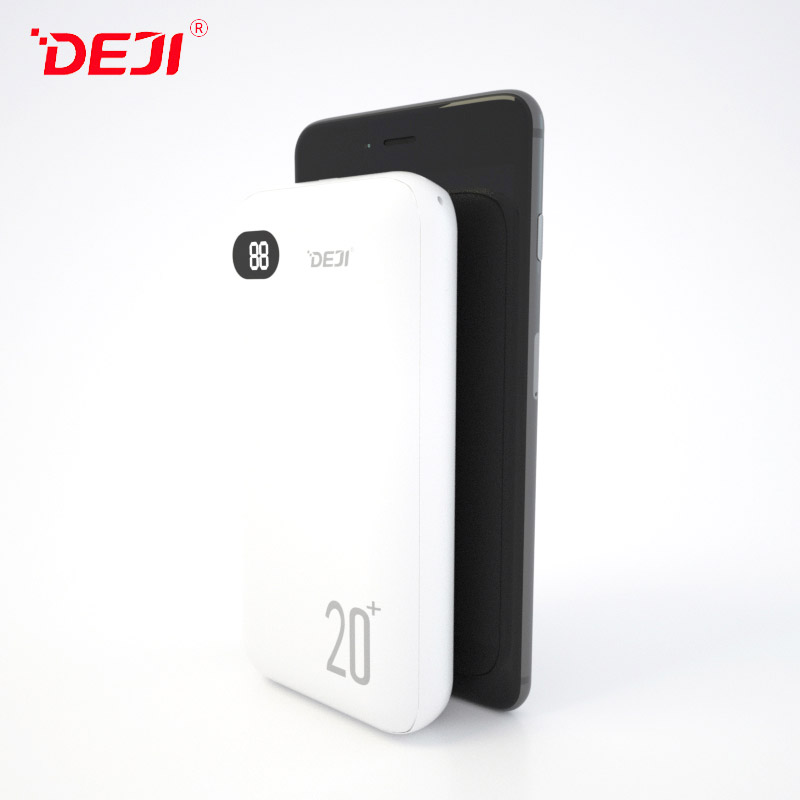1. Brief introduction of mobile power bank:
The mobile power bank is a portable charger that can be carried by individuals and can store electrical energy. It is mainly used to charge consumer electronic products such as handheld mobile devices (such as wireless phones and laptops). It is especially used in situations where there is no external power supply. . Its main components include: a battery for electric energy storage, a circuit for stabilizing the output voltage (DC-DC converter), and most of the mobile power supplies have a charger to charge the built-in battery.
The emergence of the mobile power bank was originally used to charge consumer electronic products where there is no external power supply, but because its output interface is a highly versatile USB interface, it can also be used as other USB interfaces as power input terminals. Device or device power supply, such as USB LED lights, USB electric fans, etc.

2. Working principle and composition of mobile power bank:
1. Principle
The principle of the mobile power supply is simple. When an external power supply can be found, the built-in battery is charged in advance, that is, input electric energy, and pre-stored in the form of chemical energy. When needed, the battery provides energy and generates electric energy, which is converted by voltage. The device (DC-DC converter) reaches the required voltage, and the output terminal (usually a USB interface) outputs and supplies the required equipment to provide power for charging or other purposes.
2. Basic composition
The power bank has three basic functions, including energy storage, charging and power supply. Other functions are added to meet the needs of different designs, uses and convenient operation, such as safety protection, battery status detection and display... etc.
3. Energy storage (battery)
In order to power other devices without an external power supply, the mobile power supply needs to have a battery for energy storage. Most mobile power sources use lithium-ion batteries (Li-ion) or lithium-ion polymer batteries (Li-PO). A small number of mobile power sources use nickel-metal hydride batteries (Ni-MH). There are also some early mobile power sources. Use the battery once.
Lithium-ion batteries (Li-ion) or lithium-ion polymer batteries (Li-PO) have the highest energy density in terms of weight or volume, that is, the lightest and smallest. In addition, lithium-ion/ion polymer batteries are more efficient during charging and discharging (less energy/electricity is wasted). But the price is also the highest among these batteries, and because overcharging or overdischarging can easily cause permanent damage to the battery, a more sophisticated electronic circuit is required to control the charge and discharge. Since lithium-ion/ion polymer batteries will spontaneously ignite at high temperatures, safety and stability have become extremely important requirements. A reliable safety protection circuit is required to prevent any over-temperature conditions from occurring.
Lithium-ion batteries have a hard shell, while lithium-ion polymer batteries do not. Therefore, lithium-ion batteries are theoretically slightly heavier. Since lithium-ion polymer batteries do not have a hard shell, they can be made into a specific size to match the appearance. The volume of the polymer battery will expand slightly after being fully charged. It is necessary to reserve space in the design to avoid danger caused by excessive pressure in the battery.
3.the measurement of the performance and quality of mobile power banks
1. Power supply efficiency: During voltage conversion and charging mobile power, electrical energy will be lost. The less the loss, the better the performance.
2. Security protection:
3. Overcharge protection: prevent the battery from overcharging.
4. Overvoltage protection: prevent the battery charging voltage from being too high.
5. Over-discharge protection: to prevent excessive battery discharge.
6. Overload protection: prevent the output terminal from continuing to discharge under the condition of high current.
7. Short-circuit protection: prevent the output terminal from detecting short-circuit and stopping the power supply.
8. Overheating protection: prevent the temperature from being too high.
9. The stability of voltage and current.
10. The quality of the battery cell.
 sales@batterydeji.com
sales@batterydeji.com




